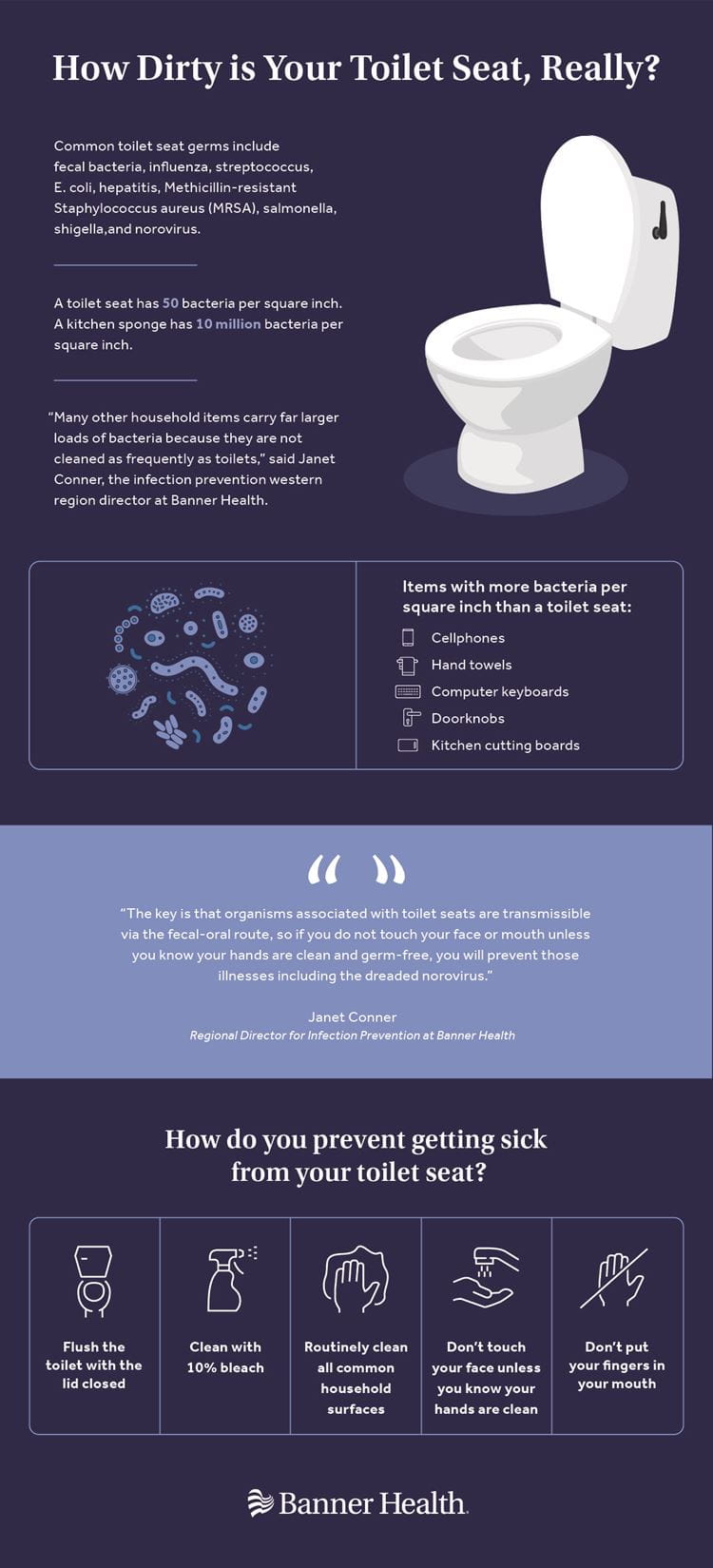If someone asked you to name the dirtiest thing in your house, would you automatically say your toilet seat? You probably would, but you’d be wrong.
We asked Janet Conner, the infection prevention western region director at Banner North Colorado Medical Center in Greely, CO, whether we need to worry about our toilets getting us sick. Conner explained that even though toilet seats come in contact with germs, they have fewer germs overall because they’re cleaned much more often (and more thoroughly) than other common household items like cellphones, hand towels, computer keyboards, doorknobs and kitchen cutting boards.
For example, a toilet seat has only 50 bacteria per square inch, whereas a kitchen sponge has 10 million bacteria per square inch.
However, even if there are fewer of them, you may still encounter various germs on your toilet seat including fecal bacteria, influenza, streptococcus, E. coli, hepatitis, MRSA, salmonella, shigella and norovirus.
So how can you prevent getting sick from your toilet seat?
There are five key steps to making sure your trip to the bathroom is as free from germs as possible.
- Flush the toilet with the lid closed.
- Clean with at least 10% bleach.
- Routinely clean all common household surfaces.
- Don’t touch your face unless you know your hands are clean.
- Don’t put your fingers in your mouth.
Lucky for us, “transmission of microorganisms that cause illness from a toilet seat happens via the fecal-oral route,” explained Conner. “If you wash your hands, you can prevent illness by eliminating the pathway for microorganisms to enter your mouth.”
Feeling ill? Many Banner Health facilities have doctors who specialize in treating infectious diseases. Visit bannerhealth.com to find a doctor near you.



